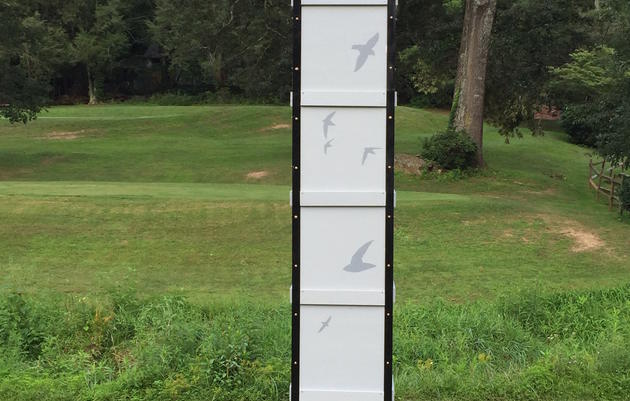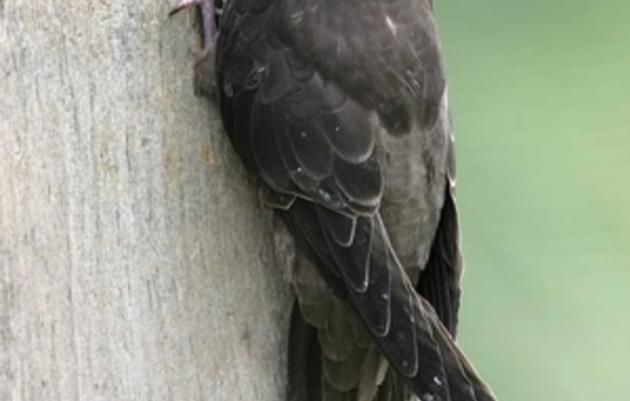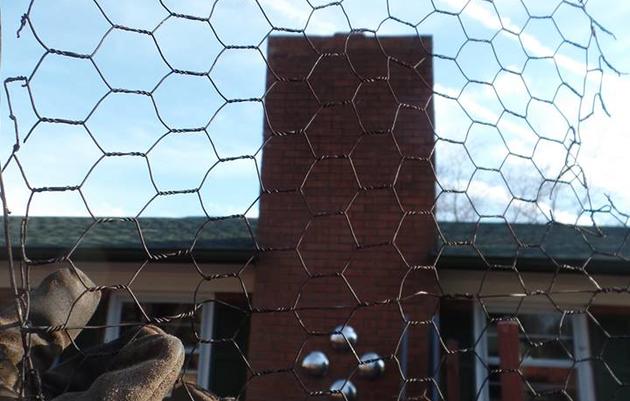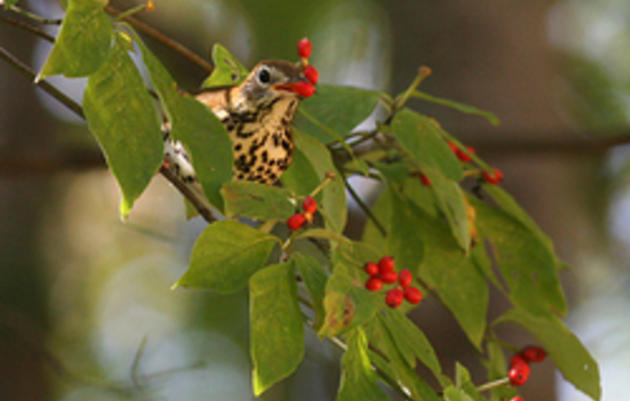Chimney Swift
The small, agile, fast-flying Chimney Swift is readily identified by its characteristic "flying cigar" profile. Swifts range from 5-6” and can be spotted by their gray-brown plumage. Members of this family are among the fastest fliers in the bird world, spending all of their daylight hours on the wing and coming down to rest only at night. Chimney Swifts rely exclusively on flying insects for food.
The Chimney Swift was named after its habit of nesting and resting inside of-chimneys. Until the European settlement of North America, Chimney Swifts nested in hollow trees. Now, they have adapted to urbanization and prefer nesting in chimneys and other artificial sites, including air vents, garages, silos and barns. They are known to breed from southern Canada east of Saskatchewan, south through Texas and to the Atlantic seaboard, and winter in the tropics.
Swifts are disrupted by human disturbance when chimneys are closed off or built with slick surfaces that the birds can’t hold on to. Audubon encourages citizens to leave chimneys unused during swift nesting season from early April through mid to late summer
In North Carolina, local Audubon chapters have organized several conservation projects to protect Chimney Swifts. Wake Audubon Society in Raleigh named the Chimney Swift its Bird of the Year from 2011 to 2012 to raise awareness about this special bird. They also helped build a swift tower at the Prairie Ridge Eco Center where research will be conducted on this unusual bird.
Fast facts about Chimney Swifts:
- Swifts are more closely related to hummingbirds than any other groups of birds, even swallows which they resemble. Swifts and hummingbirds make up an Order of birds called Apodiformes.
- Chimney Swifts do everything on the wing – eating, drinking, bathing; even snapping off twigs for nesting material. If they’re not sitting on their nest or roosting, they are flying.
- Swifts stick their nests together with their spit, which basically glues the nest together and sticks it securely to the wall of the chimney.
- Swifts have toes that are kind of like our opposable thumbs – two of their four toes can point backward, as they do in flight, or swing forward for clinging to a tree or chimney. This toe arrangement is called “pamprodactyl.”
The Chimney Swift can be found across our state during much of the year. Visit the NC Birding Trail map to find a flock in your neighborhood.
Audubon at Work for Swifts
Take Swift Action to Help An Urban Bird
Meet Audubon's 2016 Bird of the Year - the Chimney Swift! Learn how you can help this urban bird thrive.
Build Your Own Chimney Swift Tower
Find instructions and tips to build a Chimney Swift Tower in your community.
Two Towers Welcome Swifts to Black Mountain
Town of Black Mountain constructs two chimney swift towers for local bird populations.
Make Your Chimney Swift-Friendly
Every chimney makes a difference to helping the Chimney Swift. Find out how taking simple steps to make your chimney bird-friendly will help replace disappearing nesting and roosting sites they need.
How Easy It Can Be to Welcome Swifts to Your Home
Mooresville homeowners uncap their chimney so neighborhood swifts can have a place to roost.
Creating Bird-Friendly Communities
Bringing conservation efforts on where most people live – in cities and towns.
How you can help, right now
Donate to Audubon
Help secure the future for birds at risk from climate change, habitat loss and other threats. Your support will power our science, education, advocacy and on-the-ground conservation efforts.
Sign Up For Our eNewsletter
Keep up-to-date on all that happens with Audubon North Carolina's research, events and volunteer opportunities.










